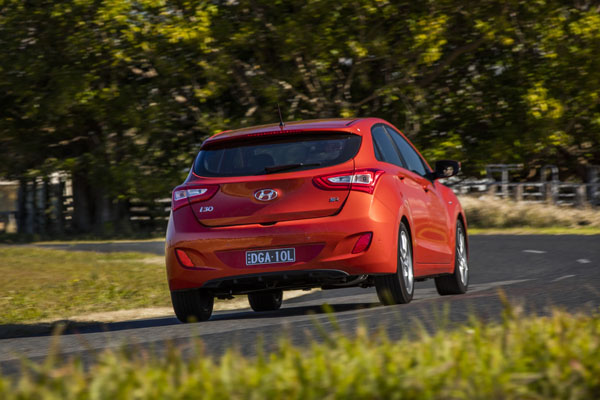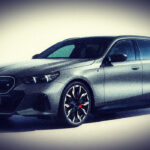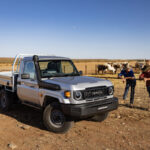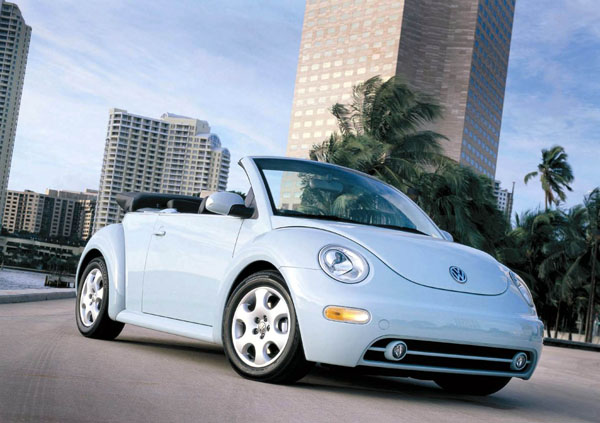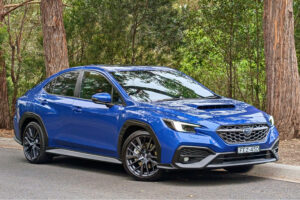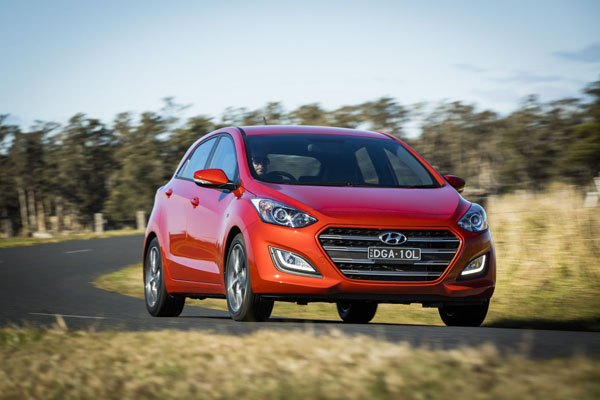 Be afraid, be very afraid: that seems to be the message Hyundai is sending out to rivals of its best-selling i30, after the hatchback became Australia’s favourite vehicle for the first half of the year.
Be afraid, be very afraid: that seems to be the message Hyundai is sending out to rivals of its best-selling i30, after the hatchback became Australia’s favourite vehicle for the first half of the year.
Almost straight away the South Korean car maker fired a further shot across the small-car market bow by adding upgrades to the sporty Series II SR and SR Premium variants.
Now it has taken the wraps off the next generation i30, to hit the streets early next year, which it says digs deep into the Hyundai DNA and is touted as a car for everyone.
In the meantime, leading off the latest makeover of the current i30 are a new design of 17-inch, grey-metallic machined-face alloy wheels and red-on-black interior with leather-appointed sports bucket seats, while SR variants with Hyundai’s six-speed automatic transmission now come standard with steering wheel-mounted paddle-shifts.
Slotting in the Series II range mid-market the i30 2.0 SR petrol manual sells for $26,550 ($28,850 automatic) and the i30 2.0 SR Premium petrol manual for $31,250 ($33,550); plus on-road costs in both cases.
The SR six-speed automatic was the test vehicle.
STYLING
Styling is straight off the Hyundai playlist with the i30 Series II featuring a deep front grille that closely aligns it with its upmarket, Fluidic Sculpture 2.0-designed Sonata and Genesis stablemates.
Hyundai’s panoramic glass sunroof is now available as an option on i30 SR, remaining standard on the SR Premium.
INTERIOR
The i30 Series II SR range now features an upgraded sports interior, with black leather upholstery, red inserts on seat bolsters, and red stitching on the seats, steering wheel, and front door armrests.
Front sports bucket seats with extended bolsters not only add to the visual impact, but also provide more lateral support for the driver and front passenger during enthusiastic driving.
Dark grey-metallic interior trim highlights replace the previous silver trim highlights in all variants, and the headlining is now black (previously grey). A striking red push-button start surround trim replaces the previous silver trim surround.
INFOTAINMENT
SR, SR Premium variants retain Hyundai’s 7.0-inch touchscreen satellite-navigation system with CD-player.
ENGINES / TRANSMISSIONS
Hyundai i30 Series II’s petrol engine line-up is Euro 5 compliant. Both the 2.0 GDi (SR and SR Premium) petrol engines are available with either six-speed manual or six-speed automatic transmissions.
SAFETY
Electronic stability control, traction control, anti-lock braking, electronic brake-force distribution, brake assist, vehicle stability management, along with a full suite of airbags have earned the 130 Series II a five-star ANCAP safety rating
DRIVING
Keyless entry and push-button engine start make for a welcome more normally found in vehicles of pedigree beyond the small passenger variety.
The tried and tested free-revving 2.0-litre direct-injection petrol engine had the Series II SR in full flight on the open road with fuel consumption of 5.4 litres per 100 kilometres on a motorway run. Around town it gulped almost twice as much (9.4 litres).
The sports seats look good and held occupants comfortably yet firmly during ride and handling expected of a vehicle whose suspension was given a thorough workout by Aussie engineers.
A generous cargo area offers ample space for shopping or luggage and loading is made easy by a high-lift tailgate and low lip.
SUMMING UP
The Hyundai i30 Series II continues to make its mark on the Australian small-car market, made even more appealing to European-style sporty hatchbacks. The next generation, just unveiled, appears set to continue the trend.
AT A GLANCE
MODEL RANGE
Hyundai i30 Series II 1.8 Active petrol $21,450
Hyundai i30 Series II 1.8 Active X petrol $22,590
Hyundai i30 Series II 2.0 SR petrol $26,550
Hyundai i30 Series II 2.0 SR Premium petrol $31,250
Hyundai i30 Series II 1.6 Active CRDi $24,050
Hyundai i30 Series II 1.6 Active X CRDi $25,190
Hyundai i30 Series II 1.6 Premium CRDi $35,190
Metallic / Mica paint $495 Panoramic sunroof $2000
Note: These prices do not include government or dealer delivery charges. Contact your local Hyundai dealer for drive-away prices.
FEATURES
17in alloy wheels finished in dark grey metallic paint with a machined face
Black/red leather appointed interior (leather now standard on SR model)
Front sports bucket seats
Red inserts on seat bolsters
Black headlining
Cloth covered interior A-pillar trims
Dark grey metallic interior trim highlights
Red stitching on seats, steering wheel, and front door armrests
Red push button start trim surround
Panoramic glass sunroof (optional on SR model, standard on SR Premium)
Electronic stability control, traction control, anti-lock braking, electronic brake-force distribution, brake assist, vehicle stability management
7.0-inch monitor
Rear view camera
Rear parking assist
Automatic dusk sensing headlamps with escort and welcome function
Daytime running lamps
High Intensity Discharge Xenon headlamps with washer system and auto-levelling
Driver and front passenger airbags, driver and front passenger side (thorax) airbags, driver knee airbag, side curtain airbags
SPECIFICATIONS (Hyundai i30 Series II 2.0 SR Premium petrol 5dr hatchback)
ENGINE:
Capacity: 1.999 litres
Configuration: Four cylinders in line
Maximum Power: 124 kW @ 6500 rpm
Maximum Torque: 201 Nm @ 4700 rpm
Fuel Type: Petrol 91 RON
Combined Fuel Cycle (ADR 81/02): 7.7 L/100km
CO2 Emissions: 179 g/km
DRIVELINE: Six-speed automatic, with lock-up torque converter
DIMENSIONS, WEIGHT AND CAPACITIES:
Length: 4300 mm
Wheelbase: 2650 mm
Width: 1780 mm
Height: 1470 mm
Turning Circle: 10.6 metres
Kerb Mass: 1283 kg
Fuel Tank Capacity: 50 litres
BRAKES:
Front: Ventilated disc
Rear: Solid disc
STANDARD WARRANTY:
Five years / unlimited kilometres




